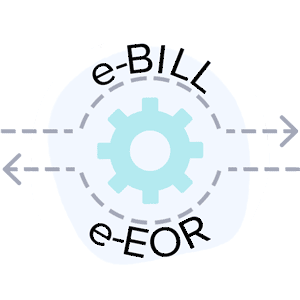SCIF Denying Evaluation and Management Codes

State Compensation Insurance Fund (SCIF) recently unveiled a “new program” with regard to reimbursement for billed Evaluation and Management (E/M) Codes. Per a conversation with a SCIF representative, if bill review determines that the level of billed E/M service is not justified by the supporting documentation, SCIF will now deny the E/M code and remit $0 in payment. |
Previously, when SCIF bill review determined that a provider’s documentation did not support the level of E/M billed, the bill review downcoded the E/M code and paid the amount due for the downcoded E/M. This downcoding is a fairly standard practice within the world of California claims administrators, as it complies with the directions of the Physician and Non-Physician Fee Schedule set out in California Code of Regulations § 9789.12.11 (emphasis ours):
“If the physician’s or qualified non-physician practitioner’s documentation for a medically necessary service conforms to either one of the guidelines, the maximum reasonable fee shall be according to the documented level of service:
(1) The ‘1995 Documentation Guidelines for Evaluation & Management Services,’ or
(2) The ‘1997 Documentation Guidelines for Evaluation and Management Services.’”
By refusing to pay for E/M services rendered, SCIF is violating the direction to pay the maximum reasonable fee “according to the documented level of service.”
It’s unclear what brought about SCIF’s change of heart, but the message to providers is clear: It is more important than ever to pay close attention to supporting documentation and double-check the level at which you’re billing.
Proper documentation of Evaluation and Management CPT codes 99203-99205 (for new patients) and 99213-99215 (for returning patients) is critical in ensuring that providers are correctly reimbursed for their services. Choosing the correct level at which to bill, however, is not always the most straightforward decision. Many providers err on the side of caution and habitually downcode, thereby sacrificing potential revenue. Others neglect to attach adequate supporting documentation, and in so doing run the risk of a denial.
We compiled a guide to demystify this process.
Determining the Proper E/M Code
The fastest and most effective way to determine appropriate coding for Evaluation and Management services is to use either the 1995 or 1997 edition of CMS’ Documentation Guidelines for Evaluation and Management Services. Below, we outline the process in broad strokes.
Determine Key Components
E/M service is dependent on two or three key components. Performance and documentation of one component (examination, for instance) at the highest level does not necessarily mean that the encounter in its entirety qualifies for the highest level of E/M service.
Of the seven components used to define the level of reported E/M service, three are designated as “key”:
- History (Key)
- Examination (Key)
- Medical decision making (Key)
- Counseling
- Coordination of Care
- Nature of Presenting Problem
- Time[1]
History (Key)
The chart below shows the progression of the elements required for each type of history. To qualify for a given type of history, all three elements in the table must be met.
Type of History |
History of Present Illness (HPI) |
Review of Systems (ROS) |
Past, Family, and/or Social History (PFSH) |
Problem Focused |
Brief |
N/A |
N/A |
Focused Expanded Problem |
Brief Problem |
Problem Pertinent |
N/A |
Detailed |
Extended |
Extended |
Pertinent |
Comprehensive |
Extended |
Complete |
Complete |
Examination (Key)
E/M service levels are based on four types of examination:
- Problem Focused - a limited examination of the affected area or organ system.
- Expanded Problem Focused - a limited examination of the affected body part or organ system and any other symptomatic or related body area(s) or organ system(s).
- Detailed - an extended examination of the affected body area(s) or organ system(s) and any other symptomatic or related body area(s) or organ system(s).
- Comprehensive - a general multi-system examination or complete examination of a single organ system and other symptomatic or related body area(s) or organ system(s).
Medical Decision Making (Key)
The chart below shows the progression of the elements required for each level of medical decision making. To qualify for a given type of decision making, two of the three elements in the table must be either met or exceeded.
Type of Decision Making |
Number of Diagnoses or Management Options |
Amount and/or Complexity of Data to be Reviewed |
Risk of Complications and/or Morbidity or Mortality |
Straightforward |
Minimal |
Minimal or None |
Minimal |
Low Complexity |
Limited |
Limited |
Low |
Moderate Complexity |
Multiple |
Moderate |
Moderate |
High Complexity |
Extensive |
Extensive |
High |
Time
For visits which consist predominantly of counseling or coordination of care (more than 50%), time is the key or controlling factor to qualify for a particular level of E/M service.
The total length of face-to-face time of the encounter must be documented, and the record should describe the counseling and/or activities to coordinate care.
Submitting a Second Review for Denied E/M Services
If you receive an EOR from SCIF – or any other claims administrator – incorrectly denying an E/M code, we strongly encourage you to submit a Second Review within 90 days disputing the incorrect denial. Do this even if you must correct the CPT Code on the original bill to a more appropriate level of service.
The Second Review must either:
- Provide support for the E/M code billed. We suggest being specific about where E/M components are documented in the bill’s Supporting Documentation – right down to the paragraph number.
OR
- Indicate the correct E/M code and include required documentation to support the correct E/M level being billed.
Takeaway
We’ll update this post with any new information we receive about these SCIF denials. In the meantime, we urge any practice partnering with SCIF to pay extra attention to their supporting documentation for any E/M bills.
Workers’ comp can work for providers. daisyBill software, data, and expertise makes billing easier, faster, and less costly. Request a free demonstration below.
REQUEST DEMO
[1] It’s important to note that, for visits that consist largely of counseling or coordination of care, time may also be a controlling factor.
DaisyBill provides content as an insightful service to its readers and clients. It does not offer legal advice and cannot guarantee the accuracy or suitability of its content for a particular purpose.




